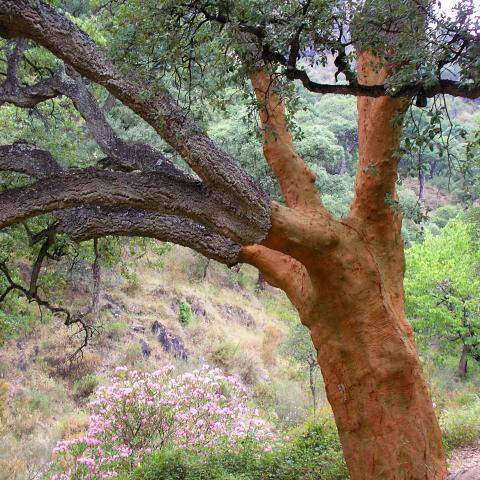We love cork – its sustainable nature, its usefulness, its beauty. But what’s really behind our love affair? What’s the back story on cork?
It’s got European roots.
The majority of cork production takes place in Portugal, Spain, and North Africa, where the Mediterranean soil, temperature, and rain conditions are ideal for the species to flourish. During harvesting, the outer bark of the cork oak’s trunk and major branches are carefully stripped by hand (no mechanical devices are allowed). The tree is not cut down and continues to live and grow, thus maintaining natural habitats for the wildlife in the area.

Cork
Bark peeled from the cork trees is air dried for about 6 months, then sorted by quality and boiled and flattened into slabs. Better quality slabs are used for wine/champagne stopper creation, and the rest used mainly for industrial components (like gaskets), construction products (like underlayment and insulation), and as a component in flooring and other decorative materials (this is where we come in).
It’s Simple – yet Complex – all at the same time
Why do we care so much about cork and cork products? Well, not only is cork a sustainable and environmentally friendly resource, by its very structure it is both simple and complex in function, all at the same time.
Cork is basically made up of cellular pockets of air, some 200 million per cubic inch of material. These air pockets severely limit the conductive properties of the material, which correlate with the reduction of the transfer of heat and sound, giving cork tremendous thermal and acoustic values.

